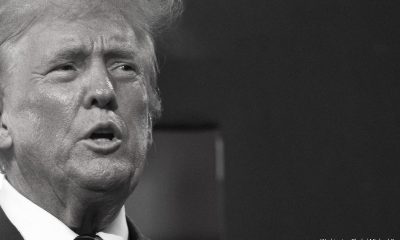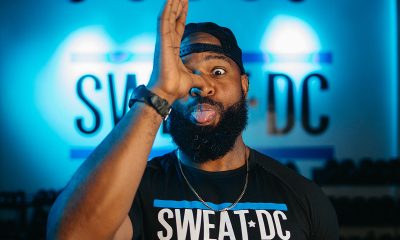Bars & Parties
Ginsberg’s Beat memories
Visionary writer’s photographs now on display
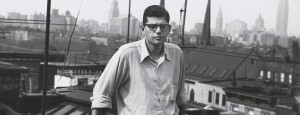
Allen Ginsberg, a visionary writer and author, was also a photographer. An exhibit of his work is on display at the National Gallery of Art. (Photo courtesy of National Gallery of Art)
He saw “the best minds” of his generation” destroyed by madness and as “angel-headed hipsters burning for the ancient heavenly connection to the starry dynamo in the machinery of night.”
He was like an Old Testament prophet preaching in jeremiad poetry to post-World War II America. He was Allen Ginsberg, a visionary writer and author of the above famous opening lines of his celebrated poem “Howl.”
He was an anarchist at heart and anti-war activist, who would try by chanting to levitate the Pentagon in 1967, and avatar to his poetic muse the romantic poet Shelley who had called poets the unacknowledged legislators of mankind.
And he was the iconic poet of gay consciousness and sexual liberation of all men as possible brothers, and indeed as lovers. He channeled the “barbaric yawp” of that poet of free verse and gay affection, Walt Whitman.
But he was also a photographer. And it was Ginsberg, who died in 1997 at age 70, whose little-known treasure trove of photographs — taken of himself and other celebrated “Beat” writers such as Jack Kerouac and William S. Burroughs, among others, between 1953-1963 — forms the remarkable exhibit of some 80 black-and-white portraits in “Beat Memories: The Photographs of Allen Ginsberg,” on view now at the National Gallery of Art’s West Building through early September.
That Ginsberg was gay was never in doubt in “Howl,” his first big success in 1956, in which he sang of those who “purgatoried their torsos night after night, with dreams, with drugs, with waking nightmares, alcohol and cock and endless balls,” and in fact the poem is far more explicit about the particulars of fellatio and sodomy and yet from the very beginning it was hailed as a notable part of the new literary canon.
Eye-opening indeed, and so are this set of unself-conscious photographs that form an intimate vision of Ginsberg as a young man finding his way “to see the world in a grain of sand, and heaven in a wildflower” as one of those who inspired him the most, William Blake, once declared to be the object of poetry.
His postwar generation, including writers like Truman Capote and Norman Mailer, musicians Charlie Parker and Dizzy Gillespie, painters like Larry Rivers and Jackson Pollock, “celebrated an art that was full of rebellion, risk, and experimentation, and one that was highly expressive of their personal experience [and] … a romantic, almost heroic faith in their art and in its redemptive qualities,” says Sarah Greenough, the National Gallery’s senior curator of photographs and curator of this stellar exhibition.
They were soon hailed as “the Beats,” a term taken “from slang first used by jazz musicians and hustlers … to denote not only the down and out but also the physically and emotionally exhausted,” says Greenough.
“Wild child” Ginsberg, while briefly studying literature at Columbia University, famously found himself in Oedipal revolt against his teachers. Instead, Ginsberg followed other teachers — romantic poets like Shelley and sometimes opium-smoking symbolists like Rimbaud, Hart Crane and Dylan Thomas, and of course most of all Whitman, alive to all sensations in his “Song of Myself,” and all of whom Ginsberg called his “secret heroes.”
“What would Allen say? What would Allen say?” Greenough asked aloud about this exhibit in a preview opening of the show, which went public on May 2. And she imagined him answering while chanting in “his candid and even beseeching voice,” with his “deep appreciation for the vernacular and the power of perception.”
In fact the photographs were taken by Ginsberg almost nonstop as he carried his $13 Kodak camera everywhere in his peripatetic life, beginning in 1953 in Greenwich Village and later San Francisco and then “on the road” in Europe, India and Southeast Asia until he lost the camera in 1963 and with it also his interest in recording life as “snapshots” of what he called “certain moments in eternity” and “the sacredness of the moment.”
All along he simply showed them to friends and then tossed them as forgotten “keepsakes,” packages of negatives pushed to the back of a desk-drawer or shoved to the bottom of his closet, where they would remain ignored by him until the early 1980s. At that point, Ginsberg came to realize that he should show them to the world — reprinted and sometimes enlarged, with extensive written inscriptions added.
Ginsberg later said that they were “meant more for a public in heaven than one here on earth, and that’s why they are charming.”
In addition to photographing his lifelong lover and companion, Peter Orlovsky, as youthful and so sexually appealing, Ginsberg also recorded snapshots of the bisexual writer Jack Kerouac, with whom he was in love, and the older novelist William S. Burroughs.
Burroughs in fact lived with Ginsberg for three months and the younger man wrote that the novelist whom he saw as “the most intelligent man in America … fell in love with me and we slept together and I saw a soft center where he felt isolated, alone in the world.” Ginsberg later admitted he took advantage of their intimacy to “invade” Burroughs’ privacy and record him lying in bed, clad only in his underwear and glancing longingly toward him.
Such photos form the backbone of this exhibit, telling a story from his earlier life but also his later life, for he resumed taking pictures from the early 1980s until his death – revisiting people like Orlovsky and Kerouac later in their lives and new faces like Bob Dylan. See this exhibit for the narrative of a generation and the faces that depict it, in this first scholarly presentation through Sept. 6.
Greenough herself will give a public lecture based on her exhibit catalogue, including a book signing, at 2 p.m. Saturday, May 23. Gallery talks meanwhile will be offered by lecturer Diane Arkin at 11 a.m. on May 18 and 25, and June 1, 15, and 17.
Other events – held in the NGA East Building auditorium – include films:
• “Lowell Blues” (2000), celebrating Jack Kerouac’s early years and featuring actor Johnny Depp, musician David Amram, and poet Gregory Corso – 2 p.m. Saturday, June 26.
• “Patti Smith: Dream of Life” (2008), the documentary record of the punk singer, songwriter and poet and Beat avatar as recorded by filmmaker Stephen Sebring, 4:30 p.m. on Sunday, June 27.
Also, the NGA’s summer tradition, the “Jazz in the Garden” concert series, begins its 10th season on Friday, May 28 with weekly performances every Friday evening from 5 to 8:30 p.m. in the Sculpture Garden. In honor of the exhibit, the first concert, May 28, features be-bop jazz performed by female jazz vocalist Leslie Summey.
a&e features
Your guide to D.C.’s queer New Year’s Eve parties
Ring in 2026 with drag, leather, Champagne, and more
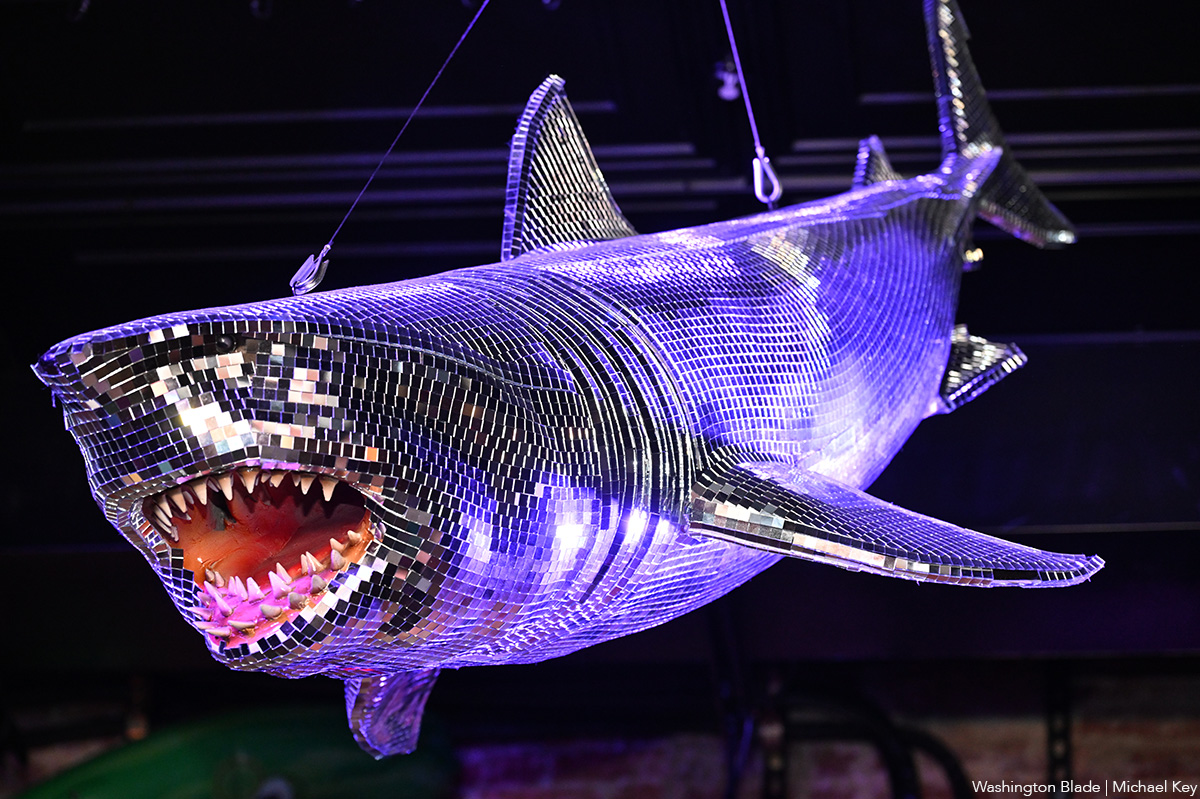
With Christmas in the rear view mirror, we can turn our attention to ringing in a much-anticipated New Year with a slew of local LGBTQ parties. Here’s what’s on tap.
Pitchers
This spacious Adams Morgan bar is hosting the “Pitchers’ Perfect New Year’s Eve.” There will be a midnight Champagne toast, the ball drop on the big screens, and no cover, all night long. The bar doesn’t close until 4 a.m., and the kitchen will be open late (though not until close). All five floors will be open for the party, and party favors are promised.
Trade
D.C.’s hottest bar/club combo is leaning into the Shark motif with its NYE party, “Feeding Frenzy.” The party is a “glitterati-infused Naughty-cal New Year’s Even in the Shark Tank, where the boats are churning and the sharks are circling.” Trade also boasts no cover charge, with doors opening at 5 p.m. and the aforementioned Shark Tank opening at 9 p.m.. Four DJs will be spread across the two spaces; midnight hostess is played by Vagenesis and the two sea sirens sensuously calling are Anathema and Justin Williams.
Number Nine
While Trade will have two DJs as part of one party, Number Nine will host two separate parties, one on each floor. The first floor is classic Number Nine, a more casual-style event with the countdown on TVs and a Champagne midnight toast. There will be no cover and doors open at 5 p.m. Upstairs will be hosted by Capital Sapphics for its second annual NYE gathering. Tickets (about $50) include a midnight Champagne toast, curated drink menu, sapphic DJ set by Rijak, and tarot readings by Yooji.
Crush
Crush will kick off NYE with a free drag bingo at 8 p.m. for the early birds. Post-bingo, there will be a cover for the rest of the evening, featuring two DJs. The cover ($20 limited pre-sale that includes line skip until 11 p.m.; $25 at the door after 9 p.m.) includes one free N/A or Crush, a Champagne toast, and party favors (“the legal kind”). More details on Eventbrite.
Bunker
This subterranean lair is hosting a NYE party entitled “Frosted & Fur: Aspen After Dark New Year’s Eve Celebration.” Arriety from Rupaul Season 15 is set to host, with International DJ Alex Lo. Doors open at 9 p.m. and close at 3 p.m.; there is a midnight Champagne toast. Cover is $25, plus an optional $99 all-you-can-drink package.
District Eagle
This leather-focused bar is hosting “Bulge” for its NYE party. Each District Eagle floor will have its own music and vibe. Doors run from 7 p.m.-3 a.m. and cover is $15. There will be a Champagne toast at midnight, as well as drink specials during the event.
Kiki, Shakiki
Kiki and its new sister bar program Shakiki (in the old Shakers space) will have the same type of party on New Year’s Eve. Both bars open their doors at 5 p.m. and stay open until closing time. Both will offer a Champagne toast at midnight. At Kiki, DJ Vodkatrina will play; at Shakiki, it’ll be DJ Alex Love. Kiki keeps the party going on New Year’s Day, opening at 2 p.m., to celebrate Kiki’s fourth anniversary. There will be a drag show at 6 p.m. and an early 2000s dance party 4-8 p.m.
Spark
This bar and its new menu of alcoholic and twin N/A drinks will host a NYE party with music by DJ Emerald Fox. Given this menu, there will be a complimentary toast at midnight, guests can choose either sparkling wine with or without alcohol. No cover, but Spark is also offering optional wristbands at the door for $35 open bar 11 p.m.-1 a.m. (mid-shelf liquor & all NA drinks).
Bars & Parties
Mixtape Sapphics hosts holiday party on Dec. 13
‘Sugar & Spice’ night planned for Saturday
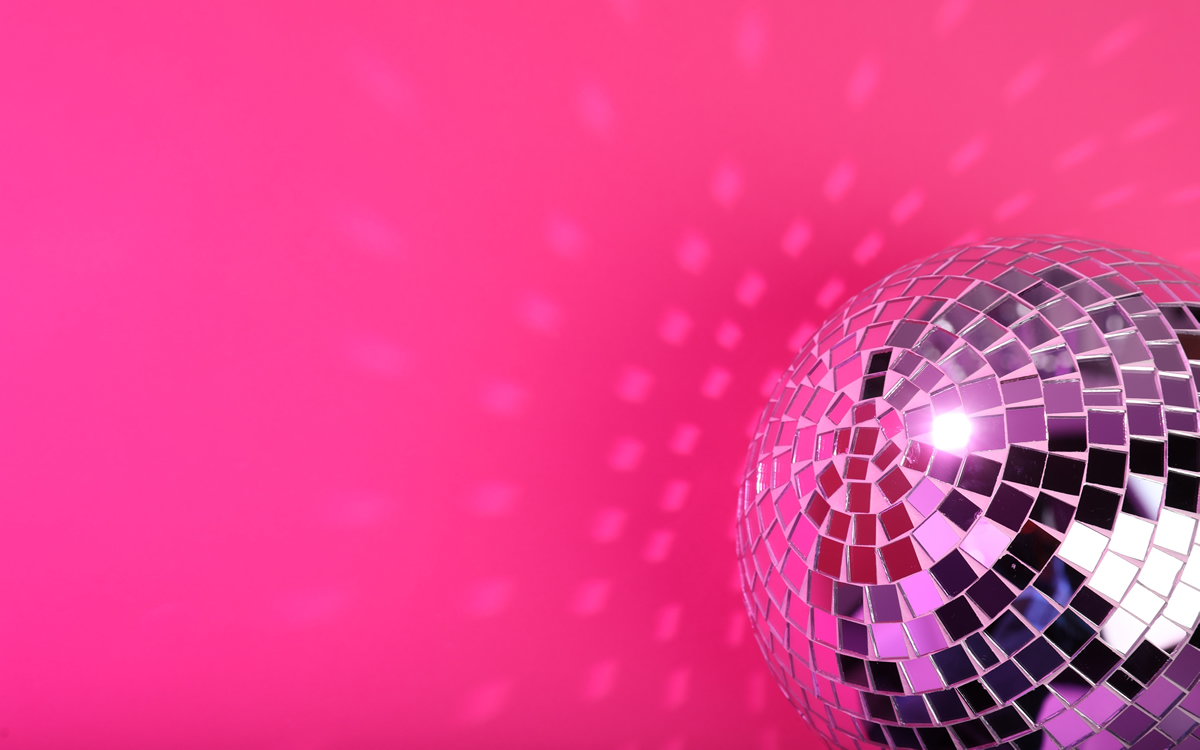
Mixtape Sapphics will host “Sapphic Sugar & Spice: A Naughty-Nice Mixtape Holiday Party” on Saturday, Dec. 13 at 4 p.m. at Amsterdam Lounge.
This is a festive, grown holiday party for queer women and sapphics 35 and older at Revolt’s Christmas pop-up. There will be music, joy, and an optional White Elephant.
This is Mixtape Sapphics’ first-ever holiday party — a cozy, flirty, intentionally grounded night created just for queer women and sapphics 35+ who want real connection, festive joy, and a warm place to land at the end of the year.
Tickets start at $13.26 and can be purchased on Eventbrite.
Bars & Parties
Impulse Group DC to host fundraiser
Giving Tuesday and Happy Hour held at Thurst Lounge
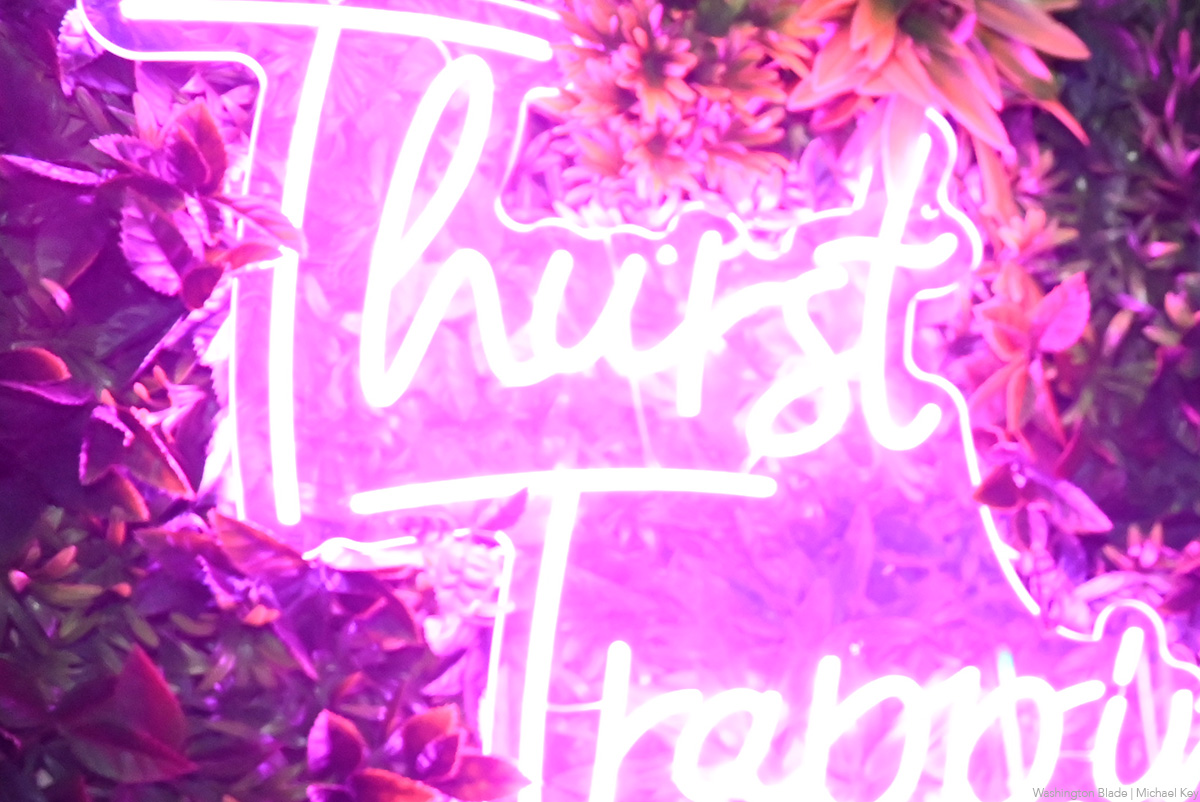
Impulse Group DC, a local advocacy organization, will host “Giving Tuesday and Happy Hour” on Tuesday, Dec. 2 at 6 p.m. at Thurst Lounge.
This event is a special happy hour fundraiser filled with good vibes, great food, and community connection. DJ Obie will be on deck keeping the energy high while you enjoy tacos, cocktails, and the kind of atmosphere only Thurst can deliver.
A portion of every signature cocktail sold goes directly toward supporting Impulse Group D.C.’s work in sexual health, mental health, harm reduction, and social justice for the D.C. community.
Admission is free and more details are available on Eventbrite.











